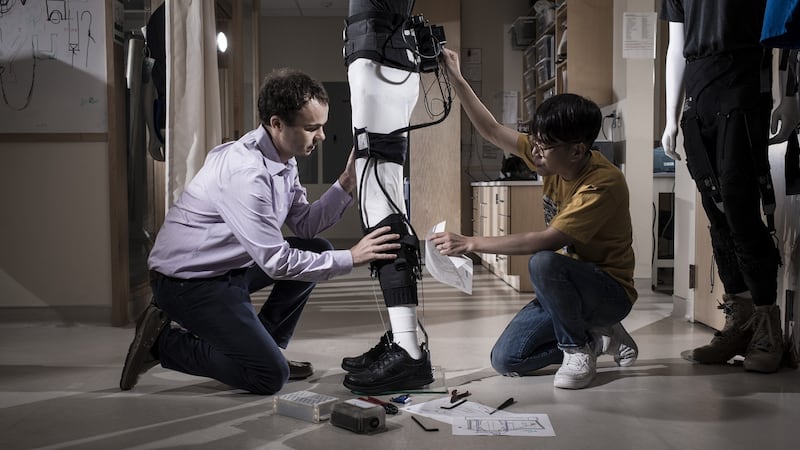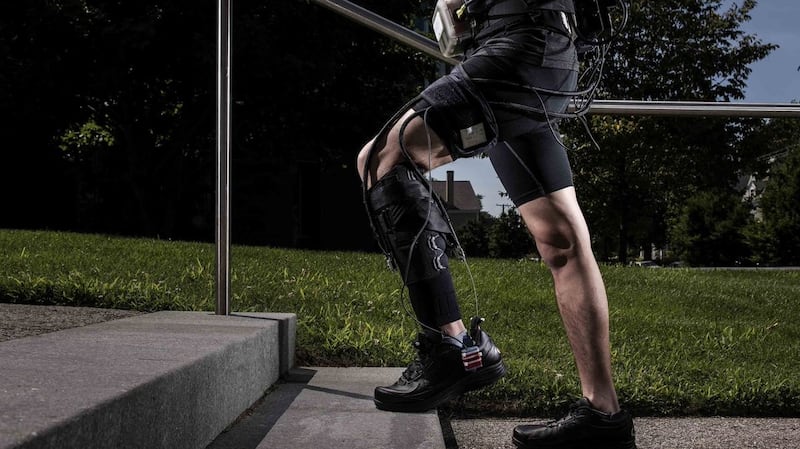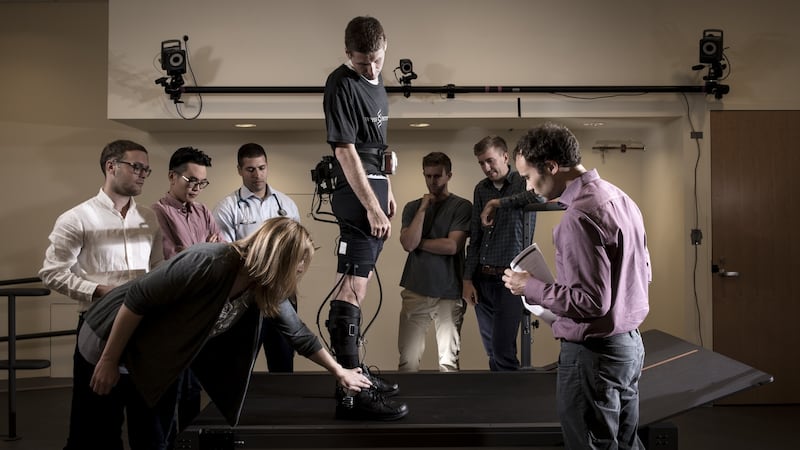Ironman provided the initial inspiration for a career in robotics that has taken Conor Walsh from Trinity College Dublin (TCD) to the Massachusetts Institute of Technology (MIT). "I was certainly captivated by Ironman, it's an exciting vision," says Walsh, now a faculty member at Harvard University.
While studying mechanical engineering at TCD, Walsh read an article in a popular US science magazine about exoskeletons that gave him the idea for what he wanted to do. He became fascinated with an idea of a “suit that would give someone superhero strength”, he says.

Much of the discussion about the development of robots centres on how they will take jobs away from humans, but Walsh is more interested in how they can help humans.
Walsh is the founding member of a research group, the Harvard Biodesign Lab, which works to use the technology to "improve people's lives". It's about using "new types of technology that would improve quality of life for people through helping with mobility, helping with manipulation of objects, or their hands or arm or recovery after injury", explains Walsh.
Walsh studied mechanical engineering at TCD and during this time he became excited about not just hardware but also electronics and software. "I really got excited by the combination of those different disciplines," he says. Having his interest sparked by robotics led Walsh to apply for a PhD at MIT where there was a lot of robotics research going on. He had particularly been fascinated by the work of Hugh Herr who heads up the biomechatronics group at MIT, and is a double amputee himself, working at creating bionic limbs.
Walsh excelled at MIT and ended up getting the opportunity to do research with Herr, his academic hero on exoskeletons. “I was blown away by the excitement in that area,” he says.
Shock to the system
The move to Boston and particularly MIT was a bit of a transition. Studying at MIT is “intense”, explains Walsh. “It was a bit of a shock to the system,” he adds but he was impressed by the “opportunity to learn from the people who are at the cutting edge of their field”.

Walsh felt that he was learning so much it was almost overwhelming. “Drinking from a fire hose is the analogy used when people first go to MIT,” explains Walsh.
Walsh was particularly impressed with the “innovation that is there for solving problems and the spirit for making an impact”. MIT is unusual in that there is a “kind of coupling between the technical side and the business or entrepreneurship” which pushed Walsh to focus not just on research but on how to create real-world applications for his ideas. He got involved with an entrepreneurship competition at MIT and won. He then went on to bring this experience into his research.
Walsh had no intention for his big ideas to remain in their ivory academic towers and it became his goal to take “high-quality academic research” and look at “how to ultimately transition this research from an academic environment out into the real world through partnerships with industries or start-up companies”.
While Walsh was attracted to the US and MIT in particular because of the environment of innovation and links between academia and enterprise, he has been impressed by what has been happening in Ireland.

“In Ireland there are people who are doing a similar kind of thing,” he says, adding that he has seen changes in the past 15 years when he left. Cities like “Dublin and Galway seem to have the characteristics , more people are starting small companies”.
Despite being in one of the most incredible academic environments in the world, a few years into his PhD, Walsh got a little disheartened with some aspects of his work. He would physically try out the robotic systems he was working on and realised the work was a long way off from widespread use. “It just seemed like it was going to be a long time before people would use them,” he says. So Walsh changed tack and moved away from exoskeletons and wearable robots to surgical robotics.
Wearable robotics
Since moving to Harvard, Walsh has explored a new area of research of making robotics out of soft material, or soft robotics. “A lot of our work has been focused on can we build wearable robotics using new types of technology so essentially using soft robotic technology,” he explains. While silicon and rubber-like materials are used, Walsh is looking more and more at how textile-type materials can be used.
It won't help someone who is fully paralysed but if someone can walk but not very well, you can give them a boost to walk better
He is working to create soft robot systems that, while they won't provide the full body robotic Ironman experience, can help to boost the body's performance.
“It won’t help someone who is fully paralysed but if someone can walk but not very well, you can give them a boost to walk better,” Walsh explains. If a person has had a stroke and their walking is affected, it can improve their ability to walk and “can have a meaningful impact on a person’s performance and quality of life”.

The technology is new and while Walsh has moved away from using robotics to create human superheroes, he has found something more impactful. On a practical level, soft robotics “are more suitable for everyday wear and more suitable from a commercialisation perspective”, says Walsh. His goal is to create technology to augment and restore human performance. “They don’t have to give someone superhero power,” he adds.












